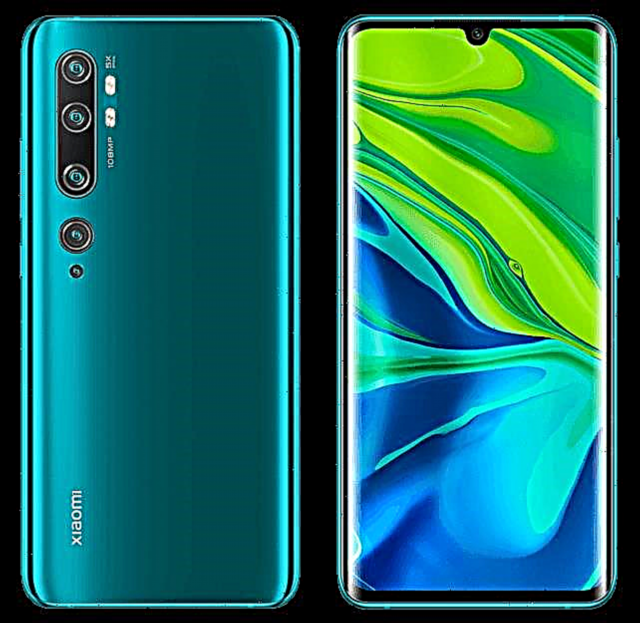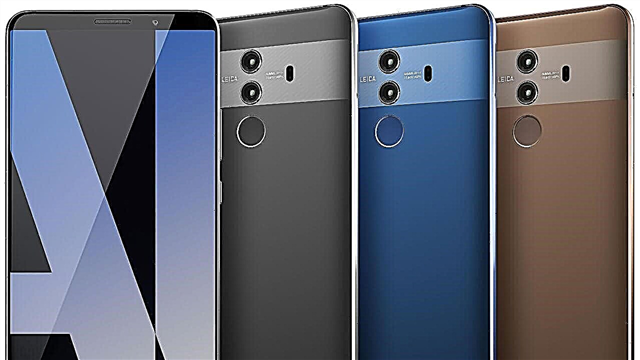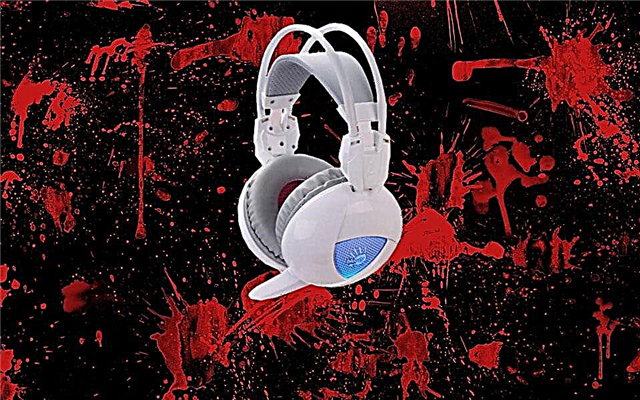There are many smartphones with a capacious battery, high-quality screen and a powerful processor. But there are not so many camera phones that have earned recognition from experts from the DxOMark laboratory, which is testing the optics of mobile devices. Those who entered the rating of smartphones with the best camera in 2020 are even fewer.

We present to you the top ten winners of the DXOMARK 2020 smartphone rating with examples of photos and videos.
10. Samsung Galaxy S20 +
 This smartphone is somewhere in the middle between the budget flagship S20 and the oldest in the line - S20 Ultra. The display of the device with a diagonal of 6.7 inches, of course, AMOLED. And the traditional Samsung battery of 4,500 mAh with fast and wireless charges. At the same time, the S20 + is built on the same high-performance Exynos 990 chipset as its more expensive flagship brother.
This smartphone is somewhere in the middle between the budget flagship S20 and the oldest in the line - S20 Ultra. The display of the device with a diagonal of 6.7 inches, of course, AMOLED. And the traditional Samsung battery of 4,500 mAh with fast and wireless charges. At the same time, the S20 + is built on the same high-performance Exynos 990 chipset as its more expensive flagship brother.
As for the cameras, outwardly, the S20 + seems to be all the same - four sensors (main, telephoto, wide-angle and macro). However, in reality, the main and the telephoto lens are very different from the "ultra version".
- The main sensor with a lower resolution than the flagship (64 MP and 108 MP, respectively). And although both devices produce a 12 MP picture, the image processing technology is different - you will have to forget about the “superpixels”.
- The sensor "telephoto" in 64 MP. Its focal length is almost the same as that of the main one, however, the rather high resolution of the sensor allows you to shoot distant objects as if they are very close (Samsung calls this technology “hybrid zoom”).
But the differences end there - the depth camera and ultra-wide-angle sensor are exactly the same as the S20 Ultra. And even if the “telephoto” and the main sensors are slightly worse than the flagship of the line, but the price is lower.
pros: good white balance even at night, nice colors, excellent wide-angle lens, IP68 waterproof.
Minuses: noise, especially at night, the front camera is slightly inferior to other participants in the top 10 in image quality.
9. Xiaomi Mi CC9 Pro Premium Edition
 In this beauty from the Chinese smartphone titanium Xiaomi, everything is of the highest level. Starting from an AMOLED display of 6.47 inches with a resolution of Full HD + and an eight-core Snapdragon 730G processor with a frequency of 2.2 Hz and ending with a battery of 5260 mAh.
In this beauty from the Chinese smartphone titanium Xiaomi, everything is of the highest level. Starting from an AMOLED display of 6.47 inches with a resolution of Full HD + and an eight-core Snapdragon 730G processor with a frequency of 2.2 Hz and ending with a battery of 5260 mAh.
The smartphone’s camera does not lag behind the rest of the “filling” in level.
- The main telephoto lens with a sensor of 108 MP, with an output resolution of 27 MP.
- In the kit it comes with a 20 MP wide-angle lens, and not even one, but two telephoto lenses!
- The shorter focus one has a resolution of 12.19 MP, and the long one - 7.99 MP.
- And there is also a special lens for macro photography at a distance of 2 to 10 cm.
As a result, Mi CC9 Pro Premium Edition is one of the best devices in the ranking of smartphone cameras, mainly due to two telephoto lenses. This feature, even among top-end devices, is not common. True, so far the capabilities of the technology lag behind the impulses of the creators of smartphones - high-resolution images often come with artifacts, albeit subtle.
The front camera with a resolution of 32 MP has a traditional modernizer for modern selfie cameras and the function of shooting in slow-mo.
pros: there is Jack 3.5 mm, there is quick charge, a bright and high-contrast screen-waterfall, 50x digital zoom.
Minuses: Cannot insert memory card, no wireless charging.
8. Huawei Mate 30 Pro
 The first, but not the only representative of Huawei smartphones in the top ten ranking cameras for smartphones DxOMark. It has a 6.53-inch OLED display, a 4,500 mAh battery and the latest technology and chipset, the Kirin 990.
The first, but not the only representative of Huawei smartphones in the top ten ranking cameras for smartphones DxOMark. It has a 6.53-inch OLED display, a 4,500 mAh battery and the latest technology and chipset, the Kirin 990.
On paper, the “stuffing” of the main camera with Leica optics is exactly the same as last year’s model - the same 40 MP sensor. Alas, the Huawei Mate 30 Pro lost a telephoto lens with a five-fold increase; instead, the smartphone has a module with a three-fold increase, very similar to the one in the "non-pro" version of the P30.
However, this slip is compensated by the latest wide-angle camera: although it is only 18 mm, however, it has a wide 1 / 1.54-inch sensor, F1.8 and an unusual aspect ratio of 3: 2.
We add that the computing power of the smartphone is also at the service of the camera. The new powerful chipset allowed the introduction of the Al-RAW algorithm, which processes the information received from the camera’s sensors and converts them into a picture with less noise and a greater level of detail.
pros: there is a slot for a memory card, there is fast and wireless charging, the front camera of 32 MP gives bright selfies without color distortion and with good white balance.
MinusesA: No 3.5mm audio jack.
7. Samsung Galaxy S20 Ultra
 If you like phablets with an excellent camera and battery, then the S20 Ultra is the perfect choice. The display of the Korean novelty has a diagonal of 6.9 inches, and a massive 5000 mAh battery allows you to take pictures at least a day in a row.
If you like phablets with an excellent camera and battery, then the S20 Ultra is the perfect choice. The display of the Korean novelty has a diagonal of 6.9 inches, and a massive 5000 mAh battery allows you to take pictures at least a day in a row.
From the “plus” version, in addition to the increased resolution of the main camera, the smartphone is distinguished by another additional depth sensor and telephoto with a large focal length.
The camera has a good exposure, colors and level of detail - a great choice for both beginners and professionals. Particularly impressive is the bokeh and ultra-wide lens, as well as smooth even when walking video in 4K resolution. However, there are problems - in low light, autofocus becomes well very leisurely, and in general shooting in night mode is not as good as one would expect from a flagship.
pros: Highest performance, IP68 waterproof, fast and wireless charging.
Minuses: There is no jack for classic wired headphones.
6. Honor V30 Pro
 A relatively inexpensive smartphone with a very good camera is well equipped both inside and out. Its 6.57-inch display has high resolution, and the “heart” of the device is the high-performance Kirin 990 chipset.
A relatively inexpensive smartphone with a very good camera is well equipped both inside and out. Its 6.57-inch display has high resolution, and the “heart” of the device is the high-performance Kirin 990 chipset.
The rear camera has three sensors:
- the main wide-angle of 27 mm and a resolution of 40 MP (the picture will be in 10 MP),
- another ultra wide in 16 mm and 12 MP
- and a telephoto lens with a triple magnification of 8 MP.
All three cameras have laser autofocus. Both the main lens and the telephoto are equipped with an optical stabilization system.
In general, lovers of good smartphone photos should definitely appreciate the Honor V30 Pro camera. He succeeds in both zoom and bokeh, night shots and flash shots. Slightly spoils the rainbow picture, some instability in the operation of autofocus and an aspect ratio of 16: 9 when shooting with an ultra-wide lens.
The front camera of this model also deserves attention. It is, unexpectedly, double: 32 MP with an aperture of f / 2.0 and 8 MP with an aperture of f / 2.2. But even if the selfies come out so clear that they want to hide the flaws, the beauty mode will help.
pros: Fast and wireless charging, comes with a protective film and a case.
Minuses: There is no 3.5 mm audio jack, but there is a Type-C-3.5 mm headphone adapter.
5. Huawei Mate 30 Pro 5G
 This smartphone has all the distinguishing features that we are used to expect from Huawei's flagships: a beautiful glass and metal design, a huge OLED display, protection against water and dust, excellent Leica camera hardware and ultra-fast charging (with reverse charging, of course). Kirin 990, the new top-end platform from Huawei's HiSilicon division, is responsible for the performance.
This smartphone has all the distinguishing features that we are used to expect from Huawei's flagships: a beautiful glass and metal design, a huge OLED display, protection against water and dust, excellent Leica camera hardware and ultra-fast charging (with reverse charging, of course). Kirin 990, the new top-end platform from Huawei's HiSilicon division, is responsible for the performance.
The main camera of the Mate 30 Pro combines:
- 40-megapixel SuperSensing wide sensor
- 40-megapixel ultra-wide Cine camera
- 8 megapixel 3x optical zoom.
- There is also a Time of Flight lens, which is essentially a depth sensor to provide background blur (bokeh effect).
The camera is able to determine which scene you are shooting and adjust accordingly. The AI in it is very good at this and very useful, especially when shooting portraits. And the night mode is one of the best available in mobile devices of the premium segment. The camera provides good exposure and accurate white balance even in very low light levels.
As for the video, the Mate 30 Pro 5G can shoot videos with a resolution of 4K (60 fps). However, by default, shooting is done at 2160p / 30fps.
The front 32 MP camera makes bright selfies with good dynamic range and excellent detail.
pros: EMUI 10 based on Android 10, fast and wireless charging, a large number of camera settings, fast 3D face unlock.
Minuses: lack of Google apps out of the box, no 3.5 mm audio jack.
4. Xiaomi Mi 10 Pro
 The older version of one of the novelties of Chinese smartphones in 2020 is equipped with a 6.67-inch OLED display with a refresh rate of 90 Hz, a Snapdragon 865 chip and a 4,500 mAh battery with support for fast, wireless and reverse charging.
The older version of one of the novelties of Chinese smartphones in 2020 is equipped with a 6.67-inch OLED display with a refresh rate of 90 Hz, a Snapdragon 865 chip and a 4,500 mAh battery with support for fast, wireless and reverse charging.
However, it was not these advantages that helped the Xiaomi product beat competitors in the ranking of smartphone cameras in 2020, but a set of excellent optics with high resolution and support for shooting with a resolution of 8K. The rear camera includes:
- 108 MP main sensor (defaults to 25 MP), has laser autofocus and optical stabilization.
- The second module with a resolution of 20 MP is super wide-angle.
- 12 MP - telephoto with double optical zoom and instant autofocus with Dual Pixel technology.
- 8 MP is another telephoto lens with laser autofocus, optical stabilization and 10x hybrid zoom.
In general, the shooting results are similar to last year's Mi CC9 Pro Premium Edition, but thanks to the more powerful Snapdragon 865 chipset, wider dynamic range and improved settings (especially in terms of texture rendering, HDR processing in a bright outdoor and typical room, shooting quality in night mode and sharpness of angles), the performance of the Mi 10 Pro model is optimal for creating high-quality photos and videos.
20 MP front camera supports face unlock and can shoot video at a speed of 120 fps.
pros: excellent stereo speakers, cooling system with 9 temperature sensors.
Minuses: the screen is easily scratched, there is no support for a memory card, no 3.5mm jack. In the global version of the device, only 1 SIM card is supported.
3. Oppo Find X2 Pro
 The first three of the 2020 DxOMark smartphone camera ratings are opened by the luxurious flagship of a Chinese company manufacturing premium products. It has a large amount of RAM - 12 GB, waterproof housing according to the IP68 standard, the current Qualcomm Snapdragon 865 chipset and Ultra Vision AMOLED-screen with a refresh rate of 120 Hz.
The first three of the 2020 DxOMark smartphone camera ratings are opened by the luxurious flagship of a Chinese company manufacturing premium products. It has a large amount of RAM - 12 GB, waterproof housing according to the IP68 standard, the current Qualcomm Snapdragon 865 chipset and Ultra Vision AMOLED-screen with a refresh rate of 120 Hz.
But such characteristics can be found in other models. Let's talk about the best in Oppo Find X2 Pro - its cameras.
The main camera is triple:
- The main sensor is 48 MP Quad-Bayer, which by default shoots with a resolution of 12 MP.
- Ultra-wide 48 MP autofocus PDAF camera.
- The 13-megapixel camera offers a whopping 5x zoom and optical image stabilization.
In addition to taking pictures, the camera can record video in 4K (60fps) with HDR. The testers were impressed by the Oppo autofocus system, which worked quickly and reliably under any conditions for both shooting and video shooting, as well as excellent video stabilization, thanks to which you can get very smooth frames even when moving. Finally, exposure to video even at low light levels is another highlight of Find X2.
In general, according to DxOMark experts, this model offers a balanced performance with results close to the best in almost all the "Photo" and "Video" subcategories.
A front camera with a resolution of 32 MP in good light creates a very clean and detailed image.
pros: stereo sound, versions with a back cover coated with faux leather or ceramic are available, there is a fast 65 W charge, a cover is included.
Minuses: The price is higher than many Chinese competitors, there is no 3.5 mm headphone jack, wireless charging, notification indicator and memory card slot.
2. Honor 30 Pro +
 This spectacular smartphone received a bright OLED screen with a refresh rate of 90 Hz, a HiSilicon Kirin 990 5G processor and a memory card slot, which are often saved when releasing a flagship with a large memory storage.
This spectacular smartphone received a bright OLED screen with a refresh rate of 90 Hz, a HiSilicon Kirin 990 5G processor and a memory card slot, which are often saved when releasing a flagship with a large memory storage.
- The main Honor camera uses the same large 50-megapixel 1 / 1.28-inch format sensor that the rating leader has, but does without optical image stabilization.
- The second module is an 8 megapixel camera equipped with a periscope-style lens with a focal length equivalent to 125 mm.
- And finally, the third in this triad is the 16 MP ultra-wide-angle lens, offering a field of view equivalent to 17 mm.
This smartphone uses the Honor-developed system of automatic white balance based on a neural network. This helps to ensure accurate color reproduction when shooting photos and videos. Also, image processing uses algorithms such as Super Resolution for better detail and textures in bokeh mode and intelligent HDR for video mode.
Separately, we note the presence of a front dual camera 32MP + 8MP.
Thanks to all these innovations, the Honor 30 Pro + captures superbly during the day and night, photos have a wide dynamic range, pleasant color reproduction and a minimum of noise in any light levels.
pros: stereo speakers, fast and smooth operation, design.
Minuses: There is no traditional headphone jack, but there is a Type-C-3.5 mm adapter, the absence of Google services.
1. Huawei P40 Pro
 Here is the best camera on your smartphone in 2020. Huawei uses the P-Series to showcase the latest technology in its mobile cameras, and the new P40 Pro is no exception.
Here is the best camera on your smartphone in 2020. Huawei uses the P-Series to showcase the latest technology in its mobile cameras, and the new P40 Pro is no exception.
On its back cover is an array of Leica cameras, consisting of:
- The main 50-megapixel Quad-Bayer sensor. Like other devices with similar sensors, it uses pixel pooling to increase the dynamic range and compensate for low light. Also, this sensor has optical stabilization.
- An ultra-wide, high-resolution sensor (40MP 1 / 1.54 ″), which, combined with a fast f / 1.8 aperture, should provide excellent image quality in low light.
- 12 MP cameras, with optical stabilization and 5x optical zoom.
Also, for most modes (including blur mode) AI RAW is used, which provides the widest dynamic range.
Add to this the ability to zoom 50 times, improved white balance and perfect color reproduction, flawless performance in all subcategories “Photos” and “Video” in the DxOMark test, as well as a 32 MP selfie camera + depth sensor, with excellent detail and fast autofocus, and you’ll understand that this is the king of camera phones, at least in the near future.
pros: top-end performance thanks to the latest HiSilicon Kirin 990 5G chipset, display refresh rate - 90 Hz, IP68 waterproof, there is a memory card slot, there is fast and wireless charging, quick unlock by fingerprint and face.
Minuses: proprietary AppGallery instead of Google services, and there are still far from all the necessary applications, there is no classic headphone jack.












